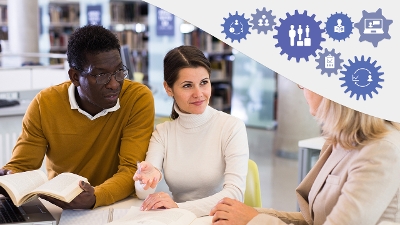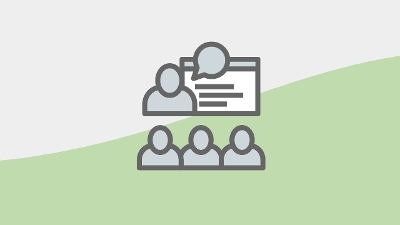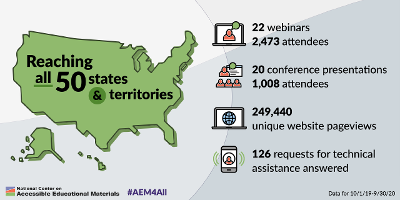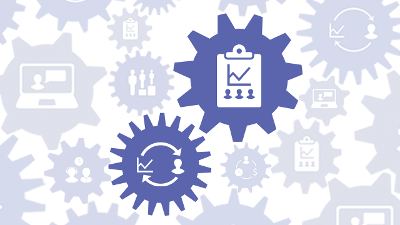Showing results 131-140 of 226 for Materials Accessibility
Search results
-

Explore the coordinating systems needed for Higher Education and learn how to develop or revise a higher education system to address best practices for the provision of accessible materials and technologies.
-
Presentation

Tuesday, March 14 – Friday, March 17, 2023
In this session, participants will be led through activities that demonstrate how the Quality Indicators can be implemented within their institutions. Freely available AEM Center resources, funded by the U.S. Department of Education, will be used throughout the session.
-
Presentation

12:30PM – 1:15PM PT on Sunday, June 27, 2021
Learn how to create more inclusive STEM-related content by following accessibility best practices.
-
Report

AEM Center at CAST, 2021
Learn more about the AEM Center's technical assistance throughout the United States from October 2019 – March 2021.
-
Report

, 2021
Learn more about the AEM Center's technical assistance throughout the United States from October 2019 to July 2021.
-
Report

AEM Center at CAST, 2020
Learn more about the AEM Center's technical assistance throughout the United States from October 2019 – October 2020.
-
Webinar

3:00PM – 4:00PM ET on Tuesday, March 26, 2019
Join a discussion with AEM leaders from Florida and Indiana about strategies for collecting and using data on student use of accessible educational materials (AEM). What information is most relevant? How are data collected and tracked? How do you know if AEM is being used effectively? To get the most out of the webinar, please review AEM Quality Indicators 5 and 6 ahead of time. And because the process of providing AEM requires collaboration, gather your colleagues to watch the webinar together!target audience? To get the most out of the webinar, please review AEM Quality Indicator 4 ahead of time. And because the process of providing AEM requires collaboration, gather your colleagues to watch the webinar together!
-
Guide
AEM Center at CAST, 2021
Use the AEM Navigator to make informed, accurate decisions about the acquisition of accessible formats for students who need them.
-
Podcast

National AEM Center at CAST, 2022
In this episode, our guests from Oklahoma share how they collaborated on a Five Star Rubric that will drive continuous improvement on accessibility for workforce development agencies throughout the state.
-
Guide
National AEM Center at CAST, 2023
This guide will help you develop knowledge and practical skills related to the Quality Indicators with Critical Components for K-12. It's also useful for preparing to work with a team on systems change at the state and/or local levels.
